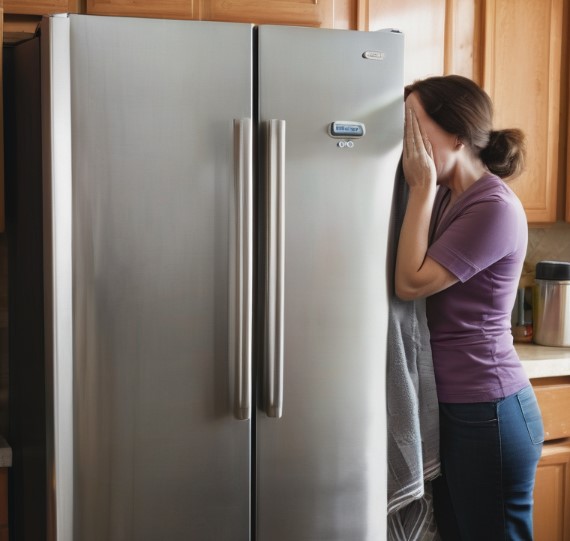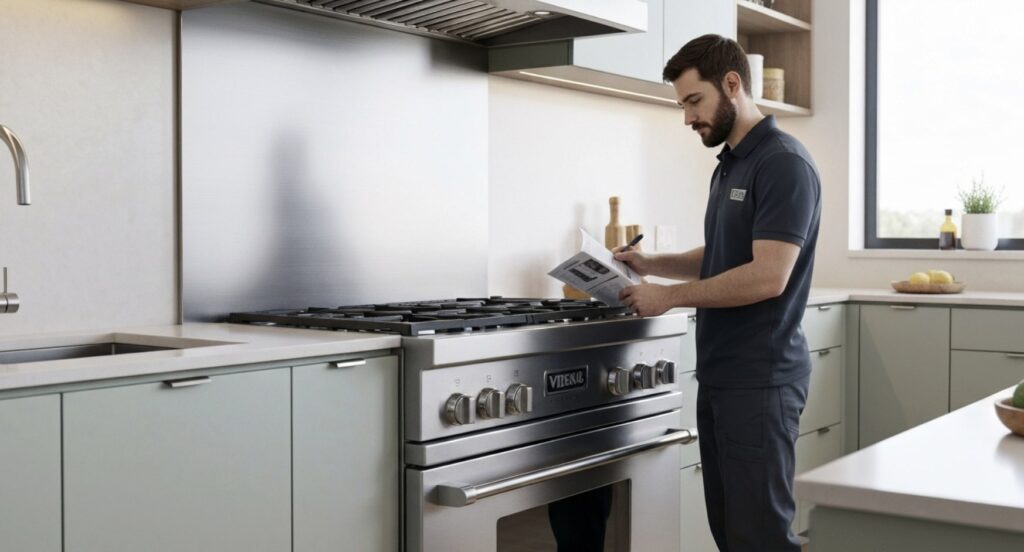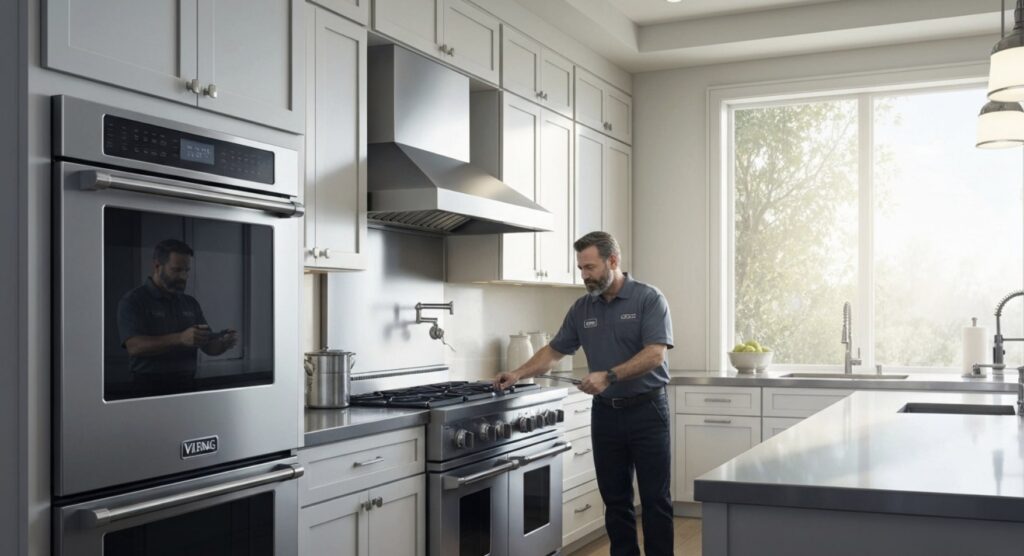Finding out that your refrigerator temperature is too warm can be scary. A warm refrigerator is a common cause of concern for many homeowners. It usually happens because of easy problems, like wrong temperature control settings or a dirty condenser coil. This guide talks about typical reasons for low refrigerator temperatures. It also gives you simple steps to troubleshoot and fix the problem.
Understanding the Importance of Proper Refrigeration
Refrigeration is very important in our daily lives. It helps keep food safe and makes perishable items last longer. When you keep the right temperature in your refrigerator, it slows down bacteria growth. This helps food stay fresh and prevents it from going bad. A working refrigerator is crucial for your health. It stops harmful germs that can make you sick from growing quickly.
Correct refrigeration is not just about safety. It also helps keep your food fresh, tasty, and nutritious. When you store fruits, vegetables, dairy, and meats at the right temperature, you can enjoy them for a longer time. This way, you can cut down on waste too.
The Role of Temperature in Food Safety
Food safety depends a lot on keeping the right temperature. Your refrigerator plays a key role in this. The best temperature for a refrigerator is 40°F (4°C) or lower. This helps stop harmful bacteria from growing quickly.
If the temperature inside the refrigerator goes up, bacteria can increase, causing food to spoil and making you sick. Food can be unsafe when the temperature is between 40°F (4°C) and 140°F (60°C). That’s why it’s important to keep your refrigerator nice and cool.
When you keep your fridge at the right temperature, you protect your food. This helps prevent spoilage and lowers the chance of eating contaminated food. In this way, you take care of your health and well-being.
Common Signs Your Refrigerator is Too Warm
Identifying a refrigerator that isn’t cooling well is important so you can fix the problem quickly. Here are some signs that show your fridge might be too warm:
- Food spoiling too quickly: If you see that your groceries spoil faster than normal, it might mean your fridge isn’t keeping things cold enough.
- Excessive condensation: A fridge working too hard to cool may have too much condensation on the insides or outside surfaces.
- The refrigerator is constantly running: If the compressor in your fridge keeps running without stopping, there might be an issue with temperature control, which can make the inside too warm.
Paying attention to these signs can help you notice a warm fridge early. This way, you can take action before it affects your food or appliance.
Before You Begin: Preparing to Troubleshoot Your Refrigerator
Before you start troubleshooting, make sure you have the right tools and safety measures in place. Doing a few easy steps can help everything go smoothly and stay safe.
First, unplug your refrigerator from the wall. This will stop any chance of electric shock. It is very important to be safe when working with any electrical appliance. Also, having some basic tools nearby can be useful. You might need a screwdriver, pliers, a multimeter, and a flashlight to see better inside the refrigerator.
Essential Tools and Materials for DIY Fixes
Dealing with refrigerator problems usually needs a few important tools. Having these tools ready can help make your repair work easier.
- Screwdriver Set: You need a set of screwdrivers with both Phillips and flat-head options. They are vital for removing panels, getting to parts, and tightening loose screws.
- Pliers: Pliers are useful for gripping, loosening, and tightening different parts, like wire connectors, clamps, and fasteners.
- Multimeter: A multimeter is important for testing electrical parts, such as thermostats, fan motors, and defrost heaters. It helps you see if they are working properly.
Having these tools ready lets you fix simple refrigerator problems. This can save you time and avoid expensive service calls for small issues.
Safety Tips for Working on Your Refrigerator
Working on any appliance can be risky. It’s very important to take safety steps when handling electricity and sharp parts. Putting safety first makes repairs safer.
Before you start fixing anything, unplug the refrigerator from the wall. This removes the chance of getting an electric shock while you repair it. Wear the right safety gear when you are touching parts or reaching inside the refrigerator.
If you are unsure about any repair step or face a problem that seems too difficult, it’s best to call a trained appliance repair technician for help. Keeping safety in mind will help you solve your refrigerator problems quickly and easily.
The Beginner’s Guide to Fixing a Warm Refrigerator
Troubleshooting a warm refrigerator can be easy. The reasons for this issue are often not too complicated. First, check the basics before thinking something serious is wrong.
By looking at these common problem areas, you might find the issue and fix it on your own. Don’t forget to check your refrigerator’s user manual for instructions or advice that fit your model.
Step 1: Checking and Adjusting Temperature Settings
Start by checking the temperature control settings in your fridge. A small change in the thermostat can make the inside warmer. Find the thermostat dial, which is usually inside the fridge. Make sure it’s set to the recommended temperature, which is about 37-40°F (3-4°C).
If the setting looks good but the fridge is still warm, try turning the thermostat a little lower. Give it a few hours to see if it cools down since fridges don’t get cool right away.
When you adjust the thermostat, don’t set it too low. This can make the compressor work too hard and cause other issues. Slowly changing the setting is the best way to find the right temperature for your fridge.
Step 2: Inspecting the Door Seals for Leaks
Worn or damaged door seals are a common reason why a refrigerator does not keep its temperature right. The seals make a tight barrier that stops cool air from getting out and warm air from getting in. Check the seals on the fridge and freezer doors for any wear, tears, or gaps.
To test if the seal is good, close the door on a dollar bill. If it is easy to pull the bill out with little resistance, there is a leak. You should repeat this test at different spots along the seal to find any weak areas.
If you find bad or broken seals, replace them quickly so the insulation works properly and the cooling is effective. You can find door seal replacements online or at appliance parts stores. They are usually simple to install.
Step 3: Ensuring Proper Air Circulation Inside the Fridge
Maintaining good air circulation in your fridge is very important. It helps keep the temperature even and the cooling effective. If you fill the shelves too much or block air vents, it can upset the airflow. This leads to uneven temperatures.
Try not to pack the fridge tightly. This can limit cold air from moving easily in the fridge. Make sure there is space between items and that air vents are clear of food containers or other things.
Also, pay attention to the containers you use for food storage. Open containers or those with loose lids can raise humidity levels in the fridge. This can affect how well it cools.
Step 4: Cleaning the Condenser Coils
The condenser coils are very important for letting heat out of your refrigerator. They are usually found at the back or underneath the fridge. Over time, they can gather dust, dirt, and other debris. This buildup can stop them from working properly and keeping your fridge cool.
It is important to clean the condenser coils regularly. This helps your fridge work better and avoids temperature problems. You can use a vacuum cleaner with a brush to clear off loose dust and dirt.
If there is more stubborn dirt, try using a coil cleaning brush. This special brush helps you reach tight spots and get rid of built-up grime. Aim to clean the coils every six months. If you have pets or live in a dusty area, you might need to clean them more often.
Step 5: Examining the Evaporator Fan for Issues
The evaporator fan is usually found inside the freezer. It helps move cold air around the refrigerator. If the fan is broken, the cold air won’t flow properly. This can lead to uneven cooling or make the refrigerator warm.
To check the evaporator fan, first listen to see if you hear any strange sounds like grinding or clicking from the freezer. If you think there’s a problem, you can carefully take off the back panel of the freezer to access the fan. Make sure the fan blades can spin easily and that the motor runs well.
If you find things blocking the fan, like ice buildup, or if the motor seems faulty, take care of those problems. You may need to defrost the freezer. In some cases, it could be a good idea to get help from a professional to replace the motor.
Step 6: Checking the Thermostat Functionality
The thermostat in your refrigerator is like its brain. It helps control the temperature and tells the cooling system when to start. If the thermostat is broken, the temperature may not be correct, which can make the refrigerator too warm or too cold.
To test the thermostat, you’ll need a multimeter to check for continuity. First, unplug the refrigerator to keep it safe. Then find the thermostat, usually located near the evaporator, and carefully unplug the wires.
Next, set your multimeter to the continuity setting. Touch the probes to the thermostat’s terminals. If you hear a beep, the thermostat is working well. If you don’t hear anything, it means the thermostat is faulty and needs to be replaced.
Advanced Troubleshooting Techniques
While the earlier steps help with common problems in a warm refrigerator, some issues need a deeper look. If the problem continues after the easy fixes, you should think about trying these extra steps.
First, check the start relay and capacitor that connect to the compressor. These parts are important for starting the compressor motor. If the relay or capacitor is not working right, it can stop the cooling from starting. You will need a multimeter to test these parts and must handle the electrical components carefully. If you feel unsure about working with electrical parts, it is better to get help from a professional.
When to Call a Professional for Refrigerator Repair
While DIY fixes can resolve many refrigerator issues, some problems necessitate the expertise of a professional appliance repair technician. Knowing when to call a pro can save you time, money, and potential safety hazards.
Consider contacting a professional if:
- You’ve exhausted basic troubleshooting steps, and the problem persists.
- The issue involves complex components like the compressor, condenser fan motor, or electronic control board.
- You’re uncomfortable working with electrical components or handling refrigerant gas.
Maintenance Tips to Prevent Future Warmth Issues
Keeping your fridge clean is crucial for its appearance, cooling efficiency, and longevity. Regular cleaning prevents dust, spills, and food debris from affecting its performance and promoting germ growth.
Clean the inside of your fridge monthly by removing shelves and drawers for a thorough wash with warm, soapy water. Wipe down the walls and door seals to eliminate spills and stickiness. Remember to clean the exterior as well using a soft cloth and a mild cleaner on handles, top, and sides.
In addition to routine cleaning, inspect key components every few months to detect issues early and prevent major breakdowns. Check door seals for damage, ensure they create a tight seal when closed. Examine condenser coils for dust buildup, clean if necessary for proper airflow. Listen for unusual noises like grinding or clicking, which may indicate fan motor issues. Promptly addressing minor problems can extend your appliance’s lifespan.
Conclusion
In conclusion, keeping the right temperature in your refrigerator is very important. It helps keep your food safe and stops it from going bad. By using the steps given, you can solve common problems that make the refrigerator temperature too warm. Make sure to clean and check your refrigerator regularly to avoid more issues later. If the fridge stays warm even after trying to fix it, you might need to get help from a professional. For energy-saving tips, visit our blog on How to Conserve Energy in Refrigerator. Take care of your fridge to keep it running well and your food fresh.
Frequently Asked Questions
What is the Ideal Temperature Setting for a Refrigerator?
The best temperature for your refrigerator to keep food safe is 40°F (4°C) or lower. Keeping it at this temperature helps slow down bacteria and keeps your perishables fresh. You should get a refrigerator thermometer to check that the temperature is correct.
What Should I Do If My Refrigerator Continues to Run Warm After Troubleshooting?
If your refrigerator is still warm after you tried to fix it, you should call a qualified appliance repair professional. They know how to find and fix complex problems that are hard to do on your own.
How Can I Tell If My Refrigerator Needs to Be Replaced?
Think about replacing your refrigerator if it needs a lot of repairs and they are expensive. Also, consider it if the appliance is more than ten years old or if it has ongoing temperature issues even after getting professional help. Often, buying a new energy-efficient model can save you money in the long run.







